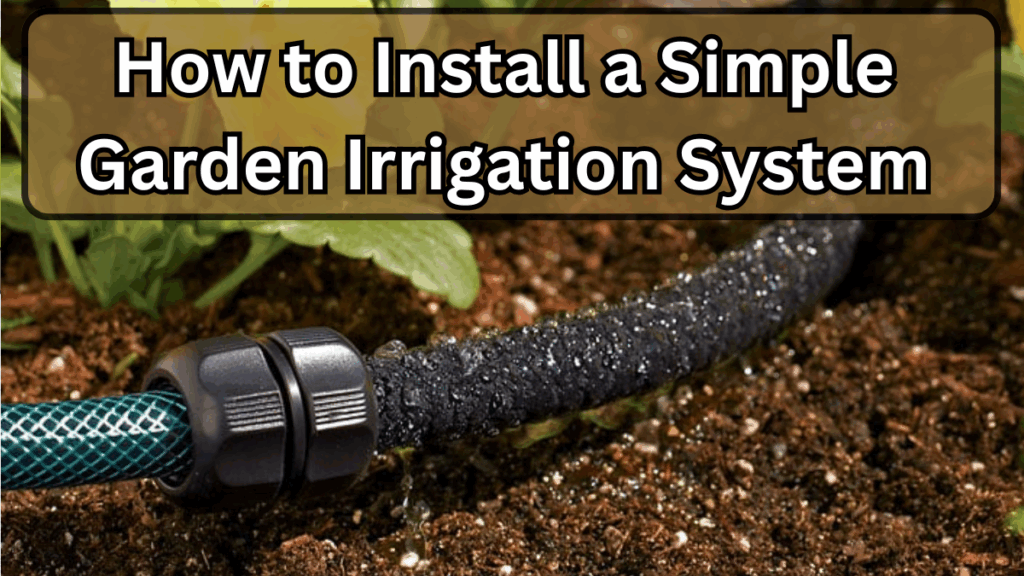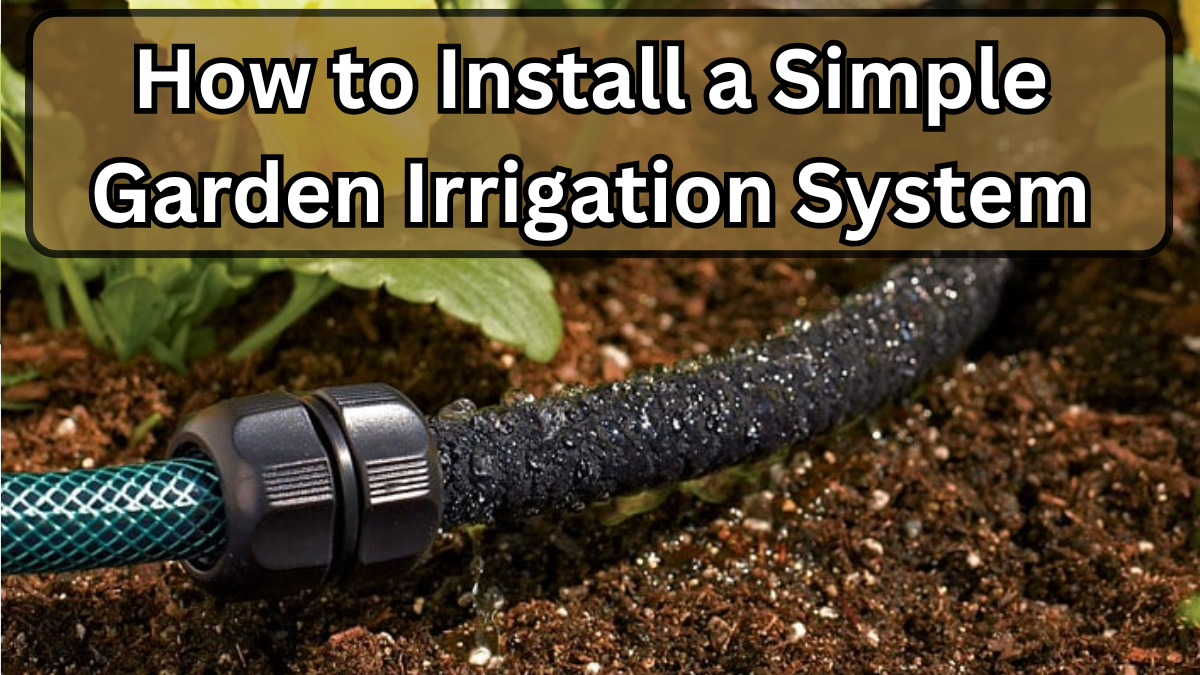Maintaining a healthy garden can be a lot of work, especially when it comes to watering. A simple garden irrigation system can make this task much easier while saving you water and time. Whether you’re using a drip kit, a soaker hose, or a timer, setting up an irrigation system doesn’t have to be complicated. Here’s a beginner-friendly guide to help you get started.

Benefits of a Simple Garden Irrigation System
Installing a simple garden irrigation system offers several advantages:
-
Water savings – Efficient watering reduces water waste.
-
Time-saving – Automate watering using a timer so your garden is watered consistently.
-
Healthier plants – Even watering helps plants thrive and reduces disease.
-
Convenience – Less manual effort and more free time for other tasks.
Materials Needed
To set up your garden irrigation system, you’ll need the following materials:
| Item | Purpose |
|---|---|
| Drip kit | Provides slow, targeted watering for plants |
| Soaker hose | Ideal for watering garden beds evenly |
| Timer | Automates watering schedule |
| Stakes & connectors | Keeps hoses in place and connects system |
| Hose filter | Prevents clogging of drip emitters |
| Mulch | Reduces evaporation around plants |
Step-by-Step Installation
Plan Your Layout
Before installing, map out your garden and determine where water is needed. Identify areas for vegetables, flowers, and shrubs, and decide whether you’ll use a drip kit or soaker hose for each section.
Connect the Timer
Attach the timer to your outdoor faucet. A timer ensures consistent watering even when you’re busy or away.
Install the Main Hose
Run your main hose along the garden beds. Make sure it’s close to the base of the plants for efficient watering.
Set Up the Drip Kit or Soaker Hose
-
Drip kit: Position the emitters near plant roots. Adjust flow rates for each plant type.
-
Soaker hose: Lay it along the rows of your garden beds. Cover with mulch to retain moisture.
Test the System
Turn on the water and check for leaks. Ensure each emitter or section of hose is delivering water evenly.
Adjust and Secure
Adjust the placement of hoses and emitters as needed. Use stakes or clips to secure hoses in place and prevent movement.
Tips for Maximizing Water Savings
-
Water early in the morning or late in the evening to reduce evaporation.
-
Mulch around plants to retain moisture.
-
Regularly check your simple garden irrigation system for clogs or leaks.
-
Adjust the timer seasonally based on rainfall and plant needs.
Simple Garden Irrigation System Comparison
| System Type | Pros | Cons | Best For |
|---|---|---|---|
| Drip Kit | Targeted watering, efficient water use | Higher initial cost | Vegetable gardens, individual plants |
| Soaker Hose | Easy setup, covers large areas | Less precise | Flower beds, shrubs |
| Timer | Automates watering, saves time | Needs battery or electricity | All types of irrigation systems |
FAQs
1. Can I install a simple garden irrigation system myself?
Yes! With a drip kit, soaker hose, and timer, beginners can easily install their own system without professional help.
2. How much water can I save with a drip kit?
Using a drip kit can reduce water usage by up to 50% compared to manual watering, making it an effective tool for water savings.
3. Can I use a soaker hose for potted plants?
Soaker hoses are best for garden beds. For potted plants, a drip kit is more precise and efficient.
4. How often should I water my garden using a timer?
This depends on plant type, soil, and climate. Generally, 15–30 minutes per session, 2–3 times per week, works well for most gardens.
Click here to learn more
